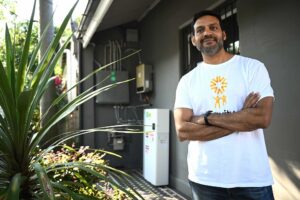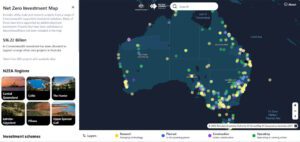Less than a week before the IPCC is due to release its final report on climate risk and its implications around the globe, scientists are calling on the people of Australia and New Zealand to volunteer the processing power of their home computers and laptops to help measure the local impacts of climate change.
Using an online modelling program created by scientists from Oxford, the UK Met Office, the University of Melbourne and NZ’s National Institute of Water and Atmospheric Research, the Weather@Home experiment allows ordinary citizens to create climate simulations and 3D representations on their home computers.
Launched on Wednesday, the do-it-yourself climate science project will mainly investigate weather patterns for 2013 – with a particular focus on the widespread heat waves in Australia, and severe drought conditions in New Zealand.
For Australia, says the University of Melbourne’s Mitchell Black, the main question driving the online experiment is whether human-caused greenhouse gas emissions have “loaded the weather dice” to bring up more heat waves – and of greater intensity – like those which affected an unusually large part of the nation in the 2012/2013 summer.
So far, says Professor David Karoly – one of the project’s coordinators from the ARC Centre of Excellence for Climate System Science and the University of Melbourne – the available climate data tells us that human influences contributed to Australia’s record high summer temperatures in 2012/2013, increasing the likelihood of them occurring by at least a factor of five.
“But we need to quantify what, exactly, was the contribution of anthropogenic global warming,” Karoly adds.
To help answer this question, volunteer computer owners will be divided into two groups: one to provide simulations daily weather conditions for Australia and NZ in 2013 as we experienced it, with the influence of climate change, such as increased sea surface temperatures; and one to simulate the weather that might have been, without the influence of climate change.
These simulations, says Karoly, will help scientists to better assess whether climate change increased the risk of heat waves and other extreme weather events in Australia in 2013 – like bush fires – and by how much, measuring not only the change in frequency, but the magnitude of any increase in intensity.
In New Zealand, the focus will be on rainfall patterns, including the severe drought that gripped most of the North Island in the early months (Jan-March) of 2013, as well as flooding rains just a year earlier, in December 2011.
“If it’s possible that such events can get more common, we’d like to know about it now so we can start planning,” said Dr Suzanne Rosier, who is heading up the NZ arm of the program, along with Dr Sam Dean, from the National Institute of Water and Atmospheric Research, (NIWA).
“To have a chance of capturing the very rarest of weather events,” says Dr Rosier, scientists require a huge amount of computer power. “The computer power we can harness in this way is much superior to the normal computing resource scientists have available.”
And as a bonus, the experiment will allow the public to learn more about climate science and play a key role assisting scientific research.
As to the risk of involving citizens in scientific research, Oxford University’s Dr Friederike Otto described it as minimal.
“Models might fail because participants forget to turn on their computer,” she said, “but (participants) cannot hack the model while it’s on their computer.”









